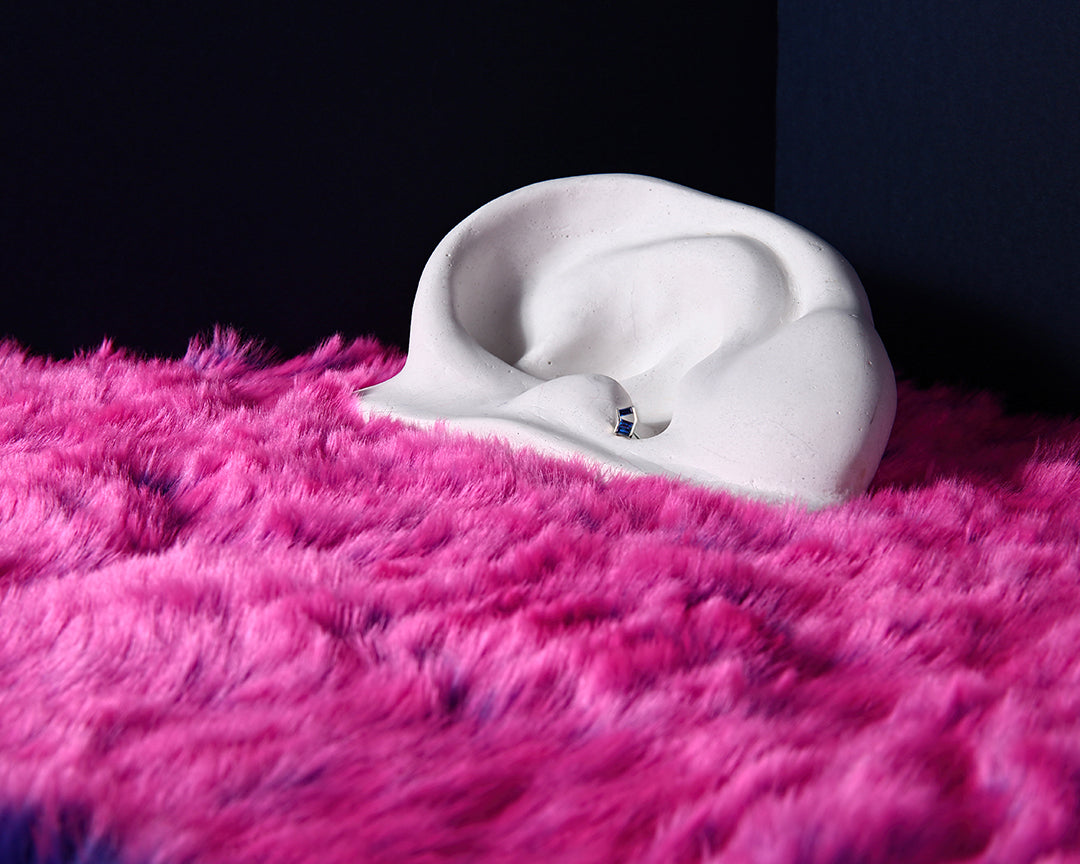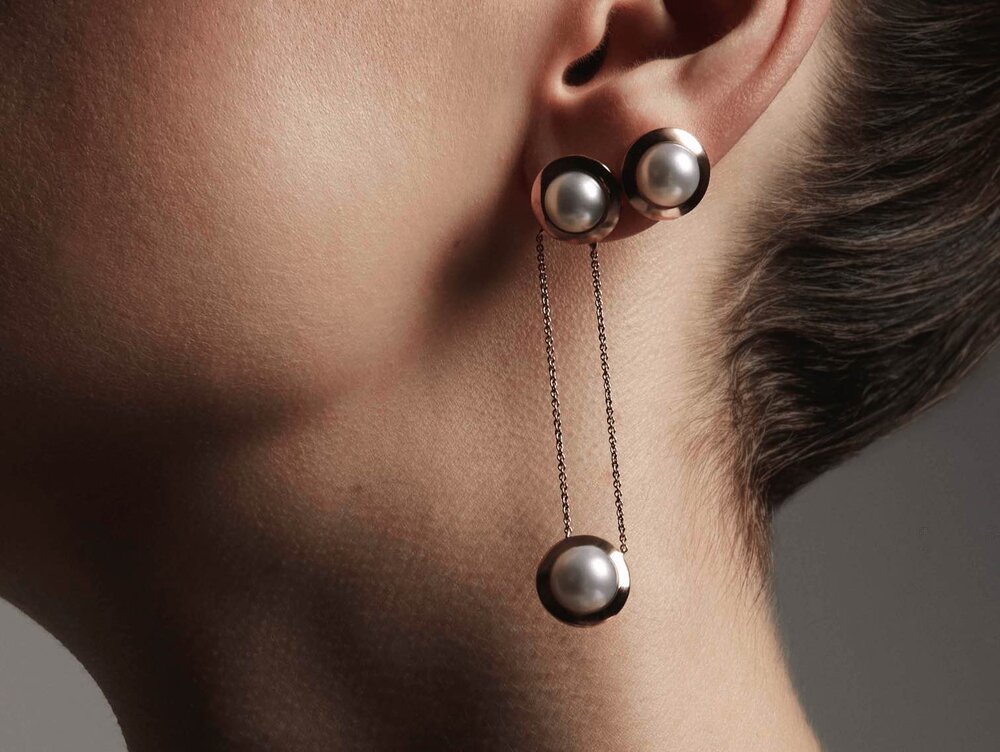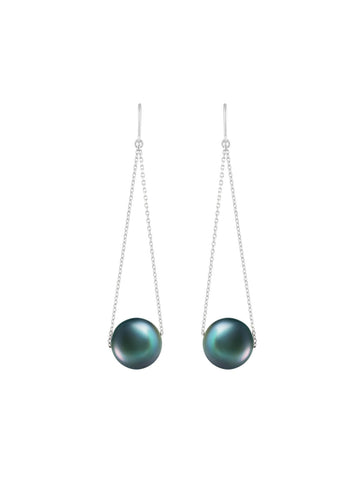Some may think of pearls as an alternative to diamonds and gemstones, but to us, they are a completely different world altogether. Pearls possess a kind of magic and mystery unlike any other.
Naturally produced and found in mollusks like oysters and mussels, pearls can come in all shapes, sizes, and even colours. So how are these luscious, iridescent globules formed?
The Science And Origins Of Pearls
The First Pearls
Pearls have been around for thousands of years. From Ancient Egypt, to the Roman Empire, to the Chinese Dynasties, people from around the world have always revered at the magnificence of pearls. The oldest known piece of pearl jewellery, is a necklace discovered in the tomb on an ancient Persian Queen and is believed to be around 2,400 years old.
The beautiful and lustrous exterior of pearls lends well not only as mark of social status, but also as an object of erotism. From the depiction of Venus as a goddess who emerged like a wondrous pearl from the sea, to the twentieth-century showgirls who donned pearls that celebrated their sexual autonomy, the symbolism of pearl as an object of love, lust, and sex, has endured throughout history. As such, the pearls in jewellery goes beyond their physical beauty.

Before the 20th century, pearls were harvested by diving deep into the oceans for oysters – a dangerous and tricky practice. Given their scarcity and preciousness, pearls were worn only by the nobles and the rich. In fact, pearls were so rare that they used to function as a trade commodity and a store of wealth. The Persian Gulf flourished as the centre of the pearl trade before oil was even discovered!
How A Pearl Forms
It starts with the oysters. When an irritant such as a grain of sand, bacteria, or food gets trapped within its shell, the oyster secretes a substance called nacre (also known as the mother-of-pearl) that covers over the irritant. The repetitive layers of nacre coating gives us the eventual shiny pearl.
Nacre can also be found on the inside of some shells. It is a composition of aragonite and conchiolin and this unique material makes the shell really strong. When examined under an electron microscope, the layers of nacre are seen to be interlaced like a brick-and-mortar wall.
When pressure is applied to one section of the shell, the nacre structure spreads out this strain across its whole mass to avoid breaking. And when the pressure is released, the layers of nacre return to their original state. Imagine yourself prodding at a liquid-filled balloon – the pressure will spread out into other areas, only to return back to normal when you release your finger. This beautiful design of mother nature is what makes shells highly resistant to stress and strain!
Naturally occurring pearls are found in 1 in 10,000 oysters, and today most pearls on the market are cultivated by man. The cultivation process starts with the breeding of oysters until they are around 1 to 2 years old, when they are then surgically implanted with a “bead” that is made from the mother-of-pearl. Following which, they will be transferred to the oyster beds where they continue to develop the pearls for several months or even years.
Modern Day Pearls

Modern day pearl farming. Source.
Today’s cultivated pearls can be attributed to the work of Kokichi Mikimoto, who tested and perfected the cultivation process over nearly two decades. His discovery disrupted the pearl industry, which previously relied heavily on pearl diving.
Pearls were so valuable in the past that only the upper echelons of Royalty and nobility could afford to wear them. With the advent of cultivated pearls, there has been a democratisation of this beautiful material. It has also paved the way for a more sustainable practice of producing and harvesting pearls. However, a good quality pearl still holds a significant value, and not all cultivated pearls are equal.
What Makes A Pearl Valuable
The scarcity and the quality of a pearl affects its value. In general, the pearls in jewelleries are graded by their lustre, blemishes, and nacre quality.
- Lustre – The amount of light reflected on its surface, or its mirror-like reflection.
- Surface blemishes – The naturally occurring imperfections formed over the pearl.
- Nacre quality – The thickness of the nacre layers, which affects the durability of the pearls.
When we investigate deeper, it is not just about the looks and the quality of the pearl, the rarity and the demand for the various types of pearls also affects their value.
Colour Of Pearls

The conchiolin in nacre has natural pigmentations that render the different colours found in pearls. The rarer the shade, the more valuable the pearl.
Different types of oysters produce pearls of various colours. While Akoya Pearls are mostly white and sometimes rose pink, South Sea Pearls can have rare shades like peacock-green and even gold. Tahitian pearls are famous for their shades of black and resembles a metallic colour.
Shape Of Pearls

As layers of nacre are coated to form the pearl, a pearl’s eventual shape depends largely on the original shape of the implanted bead. By implanting round beads during the cultivation process, it thus allows the production of more consistently round pearls.
On the other hand, naturally occurring pearls come in any shape depending on the original foreign object, which can even be a piece of fishbone or a broken piece of shell. Perfectly round natural pearls are thus the rarest and most valuable.
You can imagine how challenging it would be to put together a string of natural pearls that have roughly the same shade, shape, and size. This is also why pearl jewellery is so elusive and expensive until cultured pearls came along.
Size Of Pearls
It takes time for the nacre layers to build up so larger pearls are also more valuable. Even though naturally occurring pearls that come oversized and in odd shapes are less commonly used in jewellery, they are still incredibly valuable to collectors.
The Types Of Pearls
Pearl Jewellery From State Property
A common misconception of pearl jewellery is that they are stuffy, overly bourgeois pieces meant only for a certain type of person. Here at State Property, we believe that pearls should be for everyone, and for any occasion.
We have selected three essential pearl pieces that you need to have in your jewellery box. These pieces have been thoughtfully designed to bring pearls into the contemporary world. Pairing the pearl’s lush sensuality with the natural tones of the taut gold frames, these pieces strike distinctive silhouettes on the body.
Ellipsis Earrings
Each of the Ellipsis Earrings spots a pair of lustrous South Sea Pearls framed within a loop of pavé diamonds. The graphic form of the gold frame is contrasted with the round pearls, enhancing the softness of the pearls and its sensuality.
Allegory Major Necklace
The Allegory Major Necklace is our contemporary take on the classic pearl necklace. Featuring fine Akoya Pearls, each framed within its own space, this necklace brings about a new-world elegance.
Inversion Bracelet
A hot favourite, the Inversion Bracelet bears a centrepiece of two interlinking units, each framing an Akoya Pearl. The delicate design, together with the fine chain and soft pearls, lends the wearer a demure elegance. The bracelet is also adjustable to three lengths, with each adjustment marked by a pearl. This piece plays well with the Inversion Earrings and Inversion Necklace.
To see more of our pearl jewellery, check out the Unfold collection. All of the pieces within Unfold are named after literary expressions, which alludes to the many stories and episodes in life that are waiting to be experienced, waiting to be told.
References And Further Reading:
How Pearls Form – ThoughtCo
The History Of Pearls – NOVA, PBS
The Alluring Body, The Seductive Pearl – The Metropolitan Museum Of Art
10 Facts About Pearls – True Facet
Why Nacre Is So Incredibly Tough – Science Alert
Pearl Farming – Pearl Guide
Pearl Quality 101 – GIA



















Share:
Buying Gold Jewellery? Here’s What You Need To Know
These Diamond Earrings And Sapphire Earrings Add A Stunning Vibe For Every Occasion